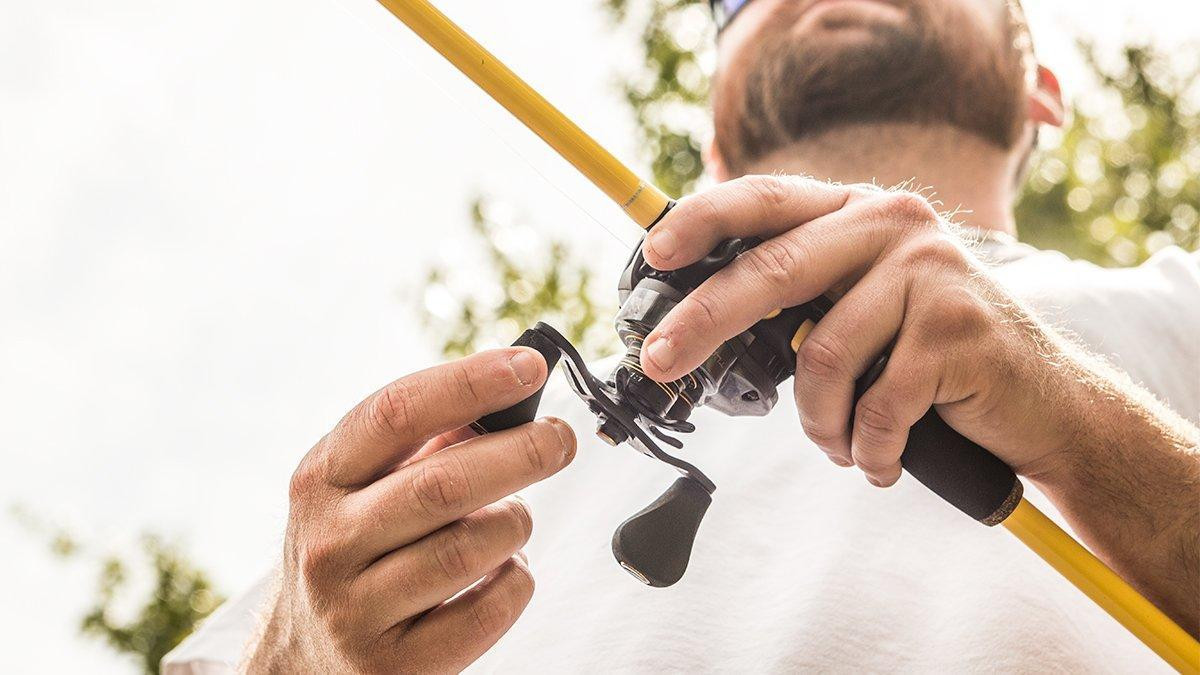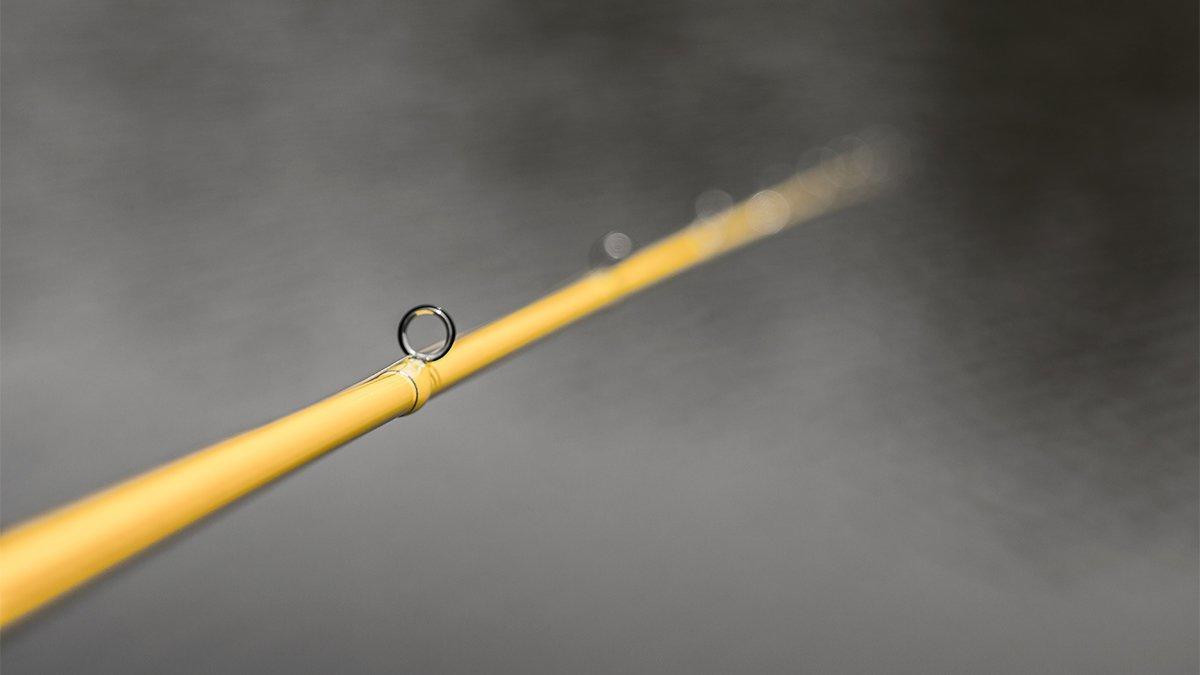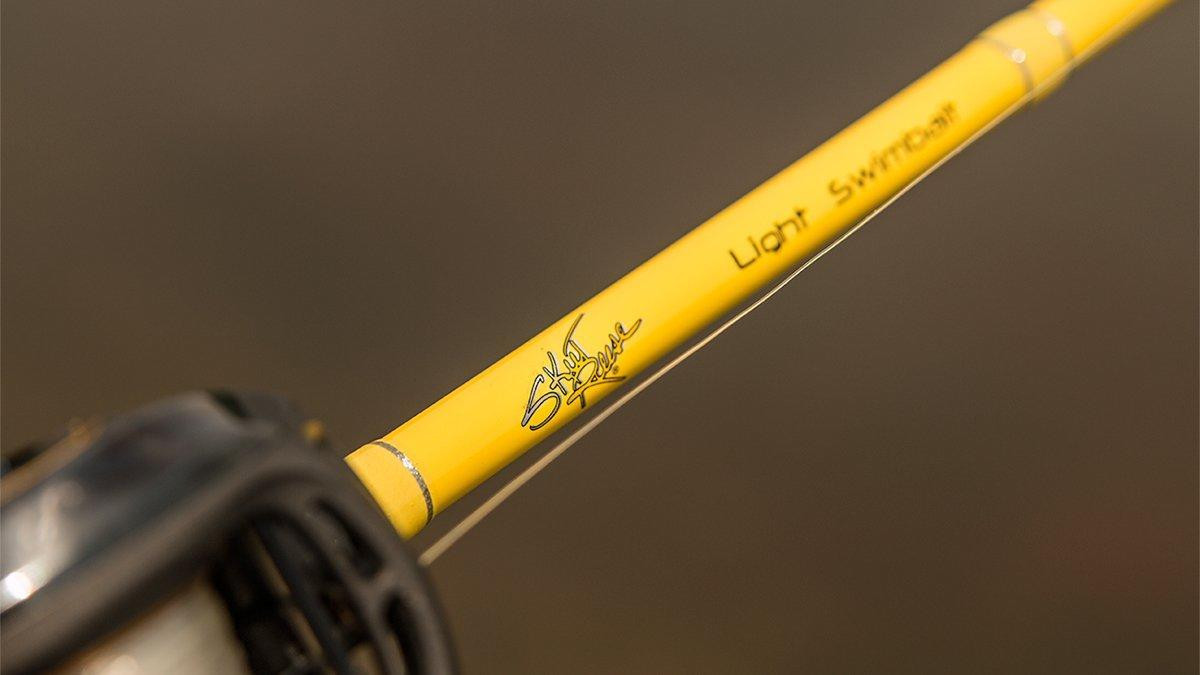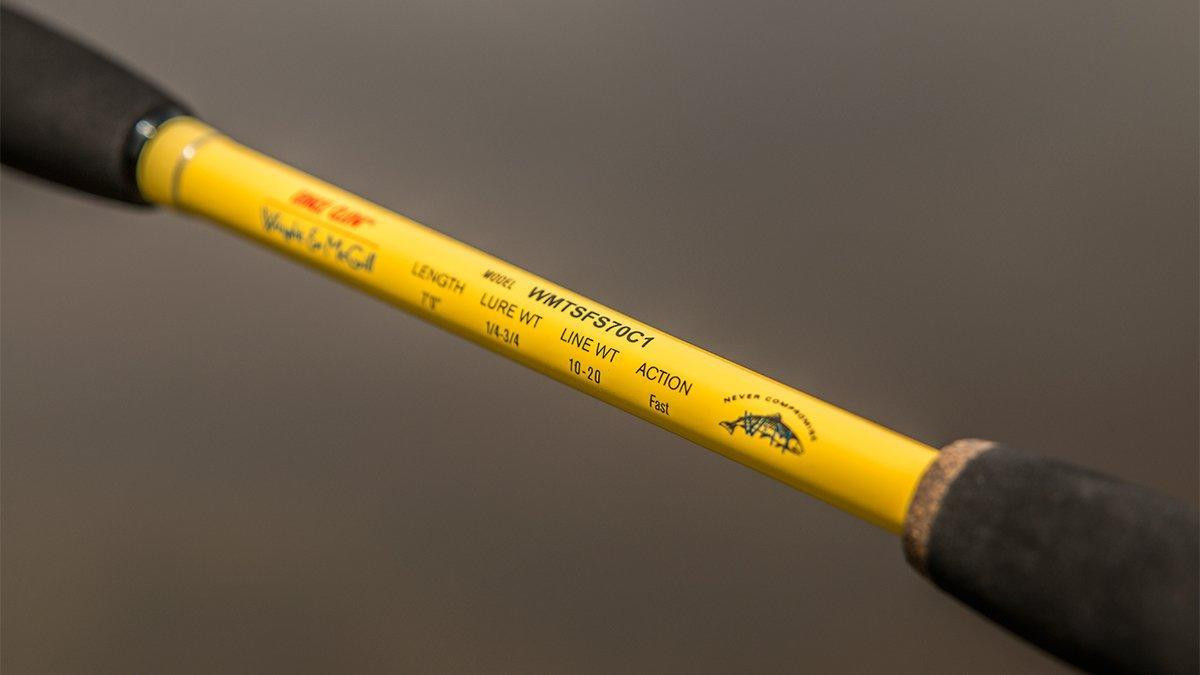It’s tough to weed through all the rods in today’s market; there are all sorts of actions, tapers, color and price points to consider. I run into this problem quite frequently, so whenever I discover a well priced rod that really impresses me, I make sure to share it with everyone. I’ve been testing the Wright & McGill Skeet Micro Honeycomb Casting Rod for a few months now and I have really enjoyed fishing with it thus far.
Although bright-colored rods aren’t necessarily my thing, I’m more than willing to look past it because this particular rod feels outstanding in my hands. At the $99 price point, you’ll be hard-pressed to find a more sensitive casting rod out there. I’ll explain what has impressed me most in the next few slides.
Sensitivity is king
I have a tested a lot of rods at this price point and I can confidently say that this particular model has been one of, if not the most sensitive. I’ve been using the 7-foot, medium light-action “Light Swimbait” model and it has an incredible amount of sensitivity when it matters most. I’m able to feel individual grass strands, small twigs in the water and even slight changes in bottom composition when I’m dragging bottom-contact baits.
This has been one of the oddest springs I’ve ever experienced, which has resulted in a lot of weird bites. They’re not really thumping my baits, so it has been very important to detect when my baits feel a little different than usual, if that makes sense. The Wright & McGill Skeet Micro Honeycomb Casting Rod has allowed me to identify very subtle bites without any issues whatsoever. Whether my Senko feels mushy or my small swimbait stops thumping, I haven’t had to get into a feeling contest with the bass. I’ve been able to set the hook quickly before these finicky fish spit my bait.
Powerful when it counts
This rod is very lightweight in your hands, but don’t mistake that weightlessness for weakness. When it’s time to set the hook, the responsive tip quickly transfers into a powerful backbone and makes quick work of quality bass, even in the thick stuff. When I first put this rod in my hands, I was a little worried that it might lack the power needed to effectively drive a single hook through the roof of a bass’ mouth, but I haven’t had that problem at all. It packs a pretty powerful punch into a small package.
Don’t let the technique labels fool you
Each of these rods is stamped with a particular technique right above the fore grip. While it may be designed for these specific applications, I’ve found these rods to be much more versatile than you’d think. For instance, I’ve been using the “Light Swimbait” model, but it has proven to be a workhorse for many other light-line casting techniques. I’ve also been using it for skipping Senkos, floating worms, soft jerkbaits and even finesse crankbaits.
I have been looking for this particular action and taper for a while and I’m really glad I found it. If you’re fishing these finesse-type presentations around boat docks, willow trees and flooded cover and need a little more backbone than a traditional spinning rod, I highly recommend this rod.
Double trigger has a good feel
It will probably take you an hour or two to get used to, but the double-trigger grip feels really nice in your hands. I put my index finger in front of the front trigger and my middle and ring fingers right behind it, which seems to make the rod feel a bit more balanced. This design still allows you to keep constant contact with the rod blank, so the sensitivity doesn’t seem to be affected at all. It also feels like I get a little more leverage with this design, especially when I’m setting the hook or fighting a fish. The rod doesn’t seem to twist or roll as much, so I’d like to think that I’m not losing as much energy between the rod and the fish.
My verdict is still out about the reel seat design, however. Instead of screwing down on the reel from the top, you actually screw the grip–where your palm sits–up onto the reel. As I fish throughout the day and set the hook several times, I’ve noticed that the reel seat will loosen a bit over time. I’ve gotten in a habit of checking and periodically tightening it, so I haven’t had any mishaps, but it is something to keep an eye on.
Durability and availability
If you like to stay in that magic $99 price range, there’s a chance you might run into some breakage issues with your rods. I have purposely been setting the hook as hard as I can and have yet to hear the first worrisome sound coming from the rod blank. I’ve accidentally stepped on the guides while on my front deck and they all remain perfectly intact.
I have a few buddies who have used several of these rods for longer than I have, so I actually called them before writing this review; I wanted to make sure they weren’t having any durability issues on the water. According to them, they have not had a single rod break while using them. One of my friends even lets his younger kids use (abuse) his rods and he said the rods have held their own without any problems.
This rod is just as light, if not a bit lighter, than many of my rods that are twice the price. Don’t let the price tag or color get in your head; I think these are some legit rods that will make a bunch of anglers happy. If you’re looking for a lightweight, sensitive and tough rod that won’t destroy your bank account, I’d recommend getting your hands on this rod. You’ll see what I’m talking about when you use it.
The Wright & McGill Skeet Micro Honeycomb Casting Rod is available at TackleWarehouse.com.















